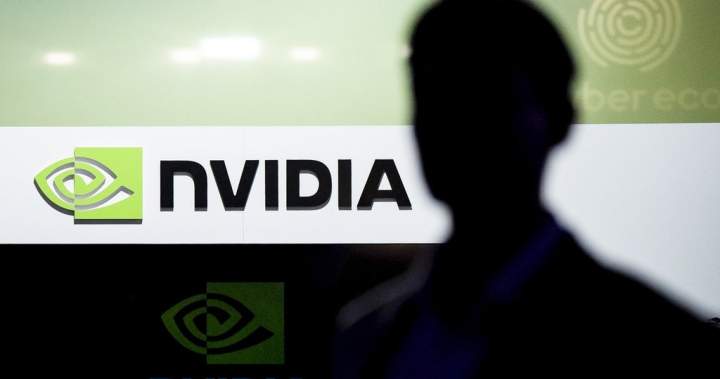The rapid growth of artificial intelligence has led to warnings from some observers of a “bubble” destined to burst, but tech leaders say there’s good reason to believe the sector won’t suffer the same fate as the dot-com crash of the early 2000s.
There are key differences between the application of AI infrastructure still being built and the internet boom of the late 1990s, said Nvidia senior vice-president of networking Kevin Deierling. Back then, everything needed to be built from scratch and companies weren’t immediately ready to use the technology.
“There was a lag,” said Deierling, speaking in Toronto on Wednesday alongside other tech sector executives on the sidelines of the Cisco Connect conference.
“All of a sudden I have all this bandwidth for the internet and the dot-com era, but now I actually need Amazon and Uber and Netflix and all of these other businesses.”
While those use cases did develop over time, Deierling said AI doesn’t have to wait decades. He said applications for software built on AI technology “already exist” and companies can take advantage of them right away.
“In the dot-com era, by the late 1990s, early 2000s, you started to see inventory build up … and people were shipping things that actually weren’t selling through. We don’t see that at all,” he said in an interview.
“This stuff gets used as soon as it gets built.”
The hopeful outlook came just hours before the company reported its latest quarterly earnings, potentially easing some analysts’ recent jitters. The company posted net income of US$31.9 billion for the third quarter, up from US$19.3 billion a year ago, while revenue rose 62 per cent.

Get daily National news
Get the day’s top news, political, economic, and current affairs headlines, delivered to your inbox once a day.
Nvidia’s sales of the computing chipsets known as graphics processing units — which are used to help train powerful AI systems like the technology behind ChatGPT and image generators — surged beyond analysts’ expectations.
Nvidia, Wall Street’s largest stock which briefly topped US$5 trillion in value, has struggled this month, losing more than 10 per cent on the S&P 500 as of Tuesday. The company’s stock price rose more than two per cent on Wednesday.
Analysts have been closely watching the stock for potential indications of how the AI sector might continue to perform because other companies rely on Nvidia’s chips to ramp up their own AI efforts.
While stocks linked to AI have been surging for years, there have been mounting concerns that the outsized level of spending in the industry may not lead to as much profit as hoped.
Other leaders in the sector also downplayed those worries at Wednesday’s conference. Francois Chadwick, chief financial officer for Toronto tech firm Cohere, likened demand for AI to a “constant drumbeat.”
“There is a real need,” said Chadwick in an interview, adding that in the early days of the internet, some tech companies were “building things that no one really even needed or wanted.”
“Right now, there’s the demand, there is the need. Companies, enterprises, governments — everyone’s asking for this.”
A study released last month found just eight per cent of Canadian organizations qualify as “AI-ready.” The CiscoAI Readiness Index said nearly three-quarters of those surveyed in Canada plan to deploy AI agents and 34 per cent expect them to work alongside employees within a year, but few have the secure infrastructure to sustain it.
Those that are fully prepared are 50 per cent more likely to see measurable value.
Deierling described Canada as “ahead on research and behind on deployment” when it comes to AI usage.
“And I don’t understand why,” he said.
“I mean, you have the core capacity, the people that understand this. You have all kinds of businesses that should benefit from this, and so I think it’s just a matter of will.”
But Deierling acknowledged that many companies remain fearful of AI. He said the key is to start out small, often focusing on internal use cases, rather than “risk your entire business on some AI that you may not understand how to implement.”
“Every company is ready to use AI, they just don’t know it,” he said.
“The risk isn’t that high. Deploy something and start using it and what you’ll find is that there’s so much productivity gains that the demand will just completely drive the next generation.”
—With files from The Associated Press
© 2025 The Canadian Press
Tech leaders at Toronto conference downplay warnings of AI ‘bubble’





